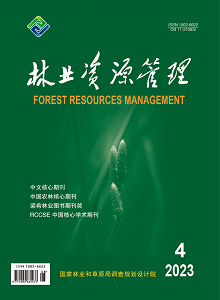The accuracy and efficiency of the recognition of forest types are strongly influenced by the choice of endmember spectra.Based on Landsat8 OLI remote sensing image,taking the typical forest vegetation in central Yunnan Province as the object of this study,combined with the forest resource inventory data,the ROIs of typical forest vegetation are extracted firstly on the basis of image fusion,then spectral curves of typical forest vegetation in Central Yunnan Province such as Pinus yunnanensis,Pinus armandii Franch.,Eucalyptus globulus Labill.,Cupressus funebris Endl.and Quercus acutissima are extracted by means of MNF and N-dimensional scattering plots.Based on these endmember spectra,the typical forest types in central Yunnan Province are identified by spectral angle mapping method,and the accuracy of classification is evaluated finally.Meanwhile,the traditional method of endmember extraction for traditional classification of forest types is used to compare with the new method in this study.The results showed as follows:1)The result of classification based on the method of endmember extraction in ROI is better,the overall accuracy was 83.46%,and Pinus yunnanensis 84.78%,Pinus armandii Franch.96.88%,Eucalyptus globulus Labill.80.60%,Cupressus funebris Endl.75.00%,Quercu sacutissima 57.69%.2) Only Pinus yunnanensis,Pinus armandii Franch.,Eucalyptus globulus Labill.and Quercus acutissima can be identified through the method of endmember extraction based on geometric apex,using endmember spectral extraction and spectral analysis many times,but not Cupressus funebris Endl.The identification accuracy was 89.13% for Pinus yunnanensis,84.37% for Pinus armandii Franch.,76.12% for Eucalyptus and 53.13% for Quercus acutissima.It is concluded that the spectra extracted by the traditional method have higher similarity,which has lower classification accuracy,and the endmember spectra is not easy to be recognized.3) The endmember extraction method based on ROI can avoid the confusion of classification results by meaningless endmember spectra for its higher efficiency,which can effectively solve the difficult problem of endmember spectra identification.

